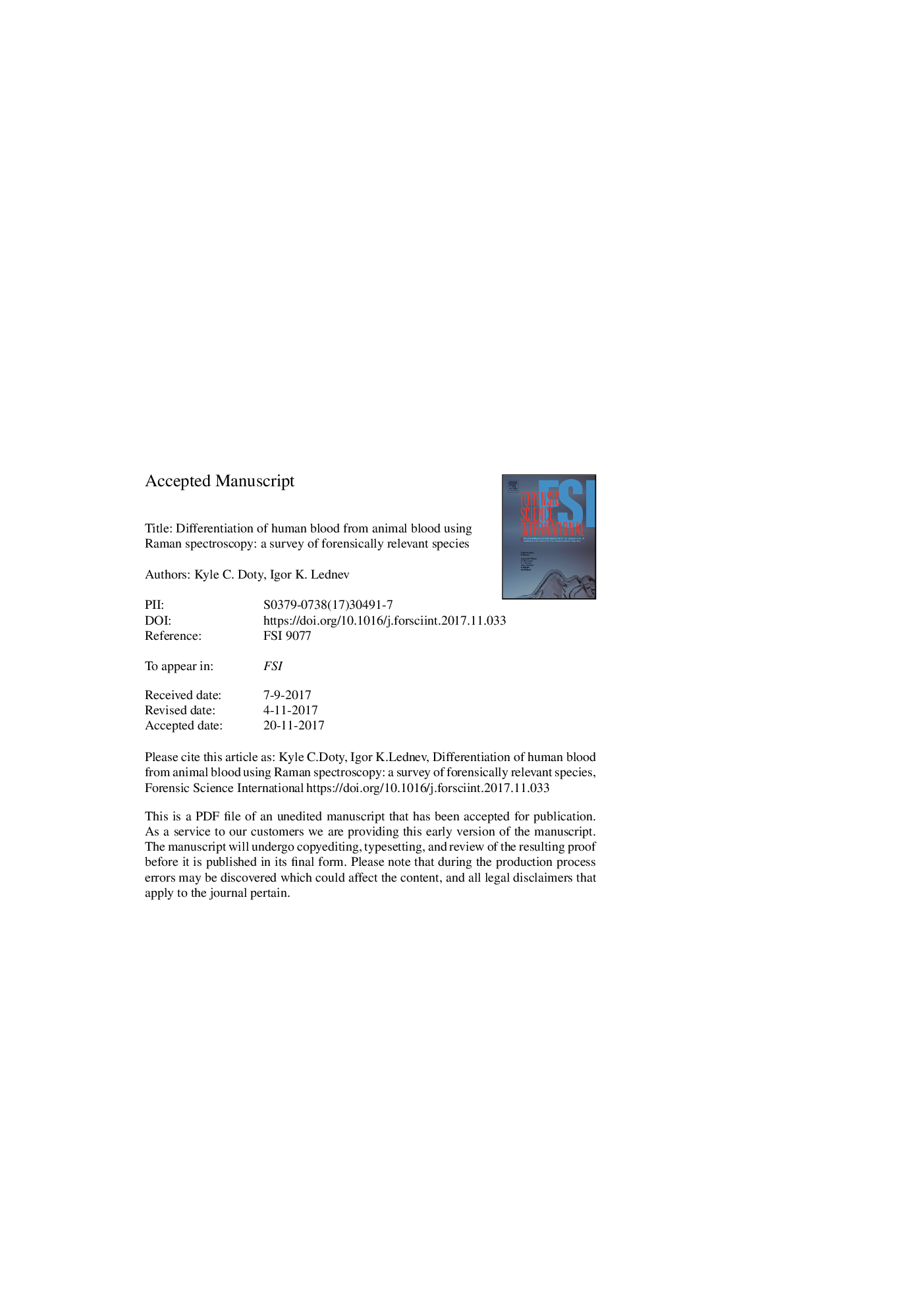| کد مقاله | کد نشریه | سال انتشار | مقاله انگلیسی | نسخه تمام متن |
|---|---|---|---|---|
| 6551379 | 1421968 | 2018 | 21 صفحه PDF | دانلود رایگان |
عنوان انگلیسی مقاله ISI
Differentiation of human blood from animal blood using Raman spectroscopy: A survey of forensically relevant species
ترجمه فارسی عنوان
تنوع خون انسان از خون حیوانات با استفاده از طیف سنجی رامان: یک بررسی از گونه های قانونی مرتبط
دانلود مقاله + سفارش ترجمه
دانلود مقاله ISI انگلیسی
رایگان برای ایرانیان
کلمات کلیدی
موضوعات مرتبط
مهندسی و علوم پایه
شیمی
شیمی آنالیزی یا شیمی تجزیه
چکیده انگلیسی
The identification of blood samples is a crucial facet of forensic investigations, particularly for violent crimes. One step in forensic serology (i.e., the analysis of bodily fluids) that is often skipped or overlooked is the determination that a bloodstain is of human or nonhuman origin. Typically, subsequent to identifying a stain as blood using a presumptive blood test, which have the propensity of providing false positive results, the stain is submitted for extraction of a DNA profile to compare with those in a database. It is extremely uncommon that evidentiary bloodstains are confirmed as being of human origin throughout the serological analysis. Therefore, time, money, and other resources can be wasted on obtaining a DNA profile from a bloodstain that may not be of human origin; if the intent was to obtain a human DNA profile and not that of an animal. This work demonstrates an important advancement of a previous study for nondestructive differentiation of human and animal blood using Raman spectroscopy coupled with partial least squares discriminant analysis (PLSDA). Raman spectra of blood from six species of animals, not previously accounted for, including chimpanzee, deer, elk, ferret, fish, and macaque were used to test a PLSDA classification method. These animal species are forensically relevant since they are (i) involved in wildlife crimes, (ii) consumed by humans, or (iii) known to produce a false positive result when their blood is tested with certain presumptive human blood tests. An external validation sensitivity of 1.00 and specificity of 0.93 for human class predictions was obtained from the PLSDA model constructed for this study. Using receiver operating characteristic (ROC) analysis of external human class predictions, the PLSDA model demonstrated 99% accuracy in being able to correctly classify any random blood sample as human or nonhuman. This is a significant advancement over the previous work and a very important finding as it demonstrates the superb selectivity of the developed method with high accuracy in being able to correctly predict the nonhuman origin of bloodstains from unknown animal species.
ناشر
Database: Elsevier - ScienceDirect (ساینس دایرکت)
Journal: Forensic Science International - Volume 282, January 2018, Pages 204-210
Journal: Forensic Science International - Volume 282, January 2018, Pages 204-210
نویسندگان
Kyle C. Doty, Igor K. Lednev,
